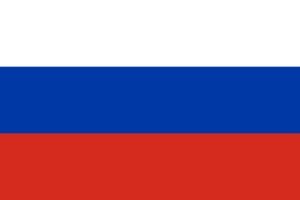Language/Russian/Culture/Icons-and-Churches
| ◀️ Russian Literature — Previous Lesson | Next Lesson — Greetings and Introductions ▶️ |
As a Russian language teacher for over 20 years, I have had the pleasure of introducing students to the rich cultural history of Russia. In this lesson, we will be exploring the world of Russian religious icons, architecture and the Orthodox Church, all of which have significant cultural importance in Russian society.
Take some time to dive into these other pages after completing this lesson: Russian Cuisine & Soviet Era and Modern Russia.
Russian Religious Icons
Russian religious icons are an essential part of Russian Orthodox Church traditions. These icons are not only beautiful pieces of art, but they also hold spiritual significance. The Orthodox belief is that icons play a role in connecting the physical world with the divine. The oldest Russian icon - the Virgin of Vladimir - is estimated to be from the 12th century.
Icons can be found inside Russian Orthodox Churches and are venerated by the faithful with prayers, bows and the kissing of the icon. The most common type of icon depicts the Virgin Mary, Jesus Christ, and various saints. The icon 'Savior in the Cathedral' is on the front iconostasis at the Cathedral of the Dormition in Moscow Kremlin and is one of the most famous and beautiful Russian icons.
Here are a few of the most notable Russian religious icons:
| Russian | Pronunciation | English |
|---|---|---|
| Богоматерь | bagomatyor' | The Mother of God |
| Спас Нерукотворный | spas nerukotvornyy | The Savior Not Made by Hands |
| Святитель Николай Чудотворец | svyatitel' nikolay chudotvoretz | St. Nicholas the Wonder-worker |
Russian Orthodox Church Architecture
The architecture of Russian Orthodox churches reflects the cultural influence of Byzantine culture on medieval Russia. Orthodox churches are easily recognizable by their onion-shaped domes, which symbolize the flames of candles.
One of the most famous examples of Russian Orthodox Church architecture is St. Basil's Cathedral, situated in Red Square, Moscow. It was built in the 16th century under the reign of Ivan the Terrible. This cathedral is renowned for its unique and colorful onion-shaped domes that showcase the beauty and intricacy of Russian architecture. The cathedral is now a museum and is open to visitors from all over the world.
Another excellent example is the Church of the Savior on Spilled Blood, located in St. Petersburg, which has a more traditional Russian design. Its architect, Alfred Alexandrovich Parland, reinterpreted the traditional Russian church style to create a more modern look.
The Orthodox Church
The Orthodox Church is the main religion in Russia and plays a big role in its culture and society. It is one of the world's oldest and largest Christian denominations, tracing its origins back to the early Christian Church in Jerusalem. The Russian Orthodox Church became autocephalous(gradually independent of Constantinople) in the 15th centuryunder Metropolitan Jonah, and the Patriarchate was restored in the 20th century.
The Orthodox Church follows the Byzantine Rite of worship, where the whole liturgy is sung. Church services are very ritualistic and can last for several hours. The Orthodox Church also has strict rules concerning fasting, confession, and marriage.
Conclusion
I hope this lesson has provided you with a small window into the world of Russian culture, and has sparked your interest in learning more about the rich history, art and religious traditions of this fascinating country. There is much more to explore, and I encourage you to continue your study of the Russian language and culture.
Sources
- Russian icons - Wikipedia
- Russian Culture → → Icons and Churches
- Church Played "Unpredictable" Role in Russian Art | Tulane News
Congratulations on finishing this lesson! Explore these related pages to keep learning: Traditional Celebrations & Famous Writers.
Videos
(RUSSIAN ICONS) BLACK PEOPLE IN EUROPE - YouTube
Other Lessons
- Why Learn Russian
- Visual Arts : Paintings
- Matryoshka Doll
- Russia Historical Events
- Antarctica Timeline
- Dance
- Russian Folk Traditions
- Russian Literature
- Celebrations
- Russian Cuisine
| ◀️ Russian Literature — Previous Lesson | Next Lesson — Greetings and Introductions ▶️ |

